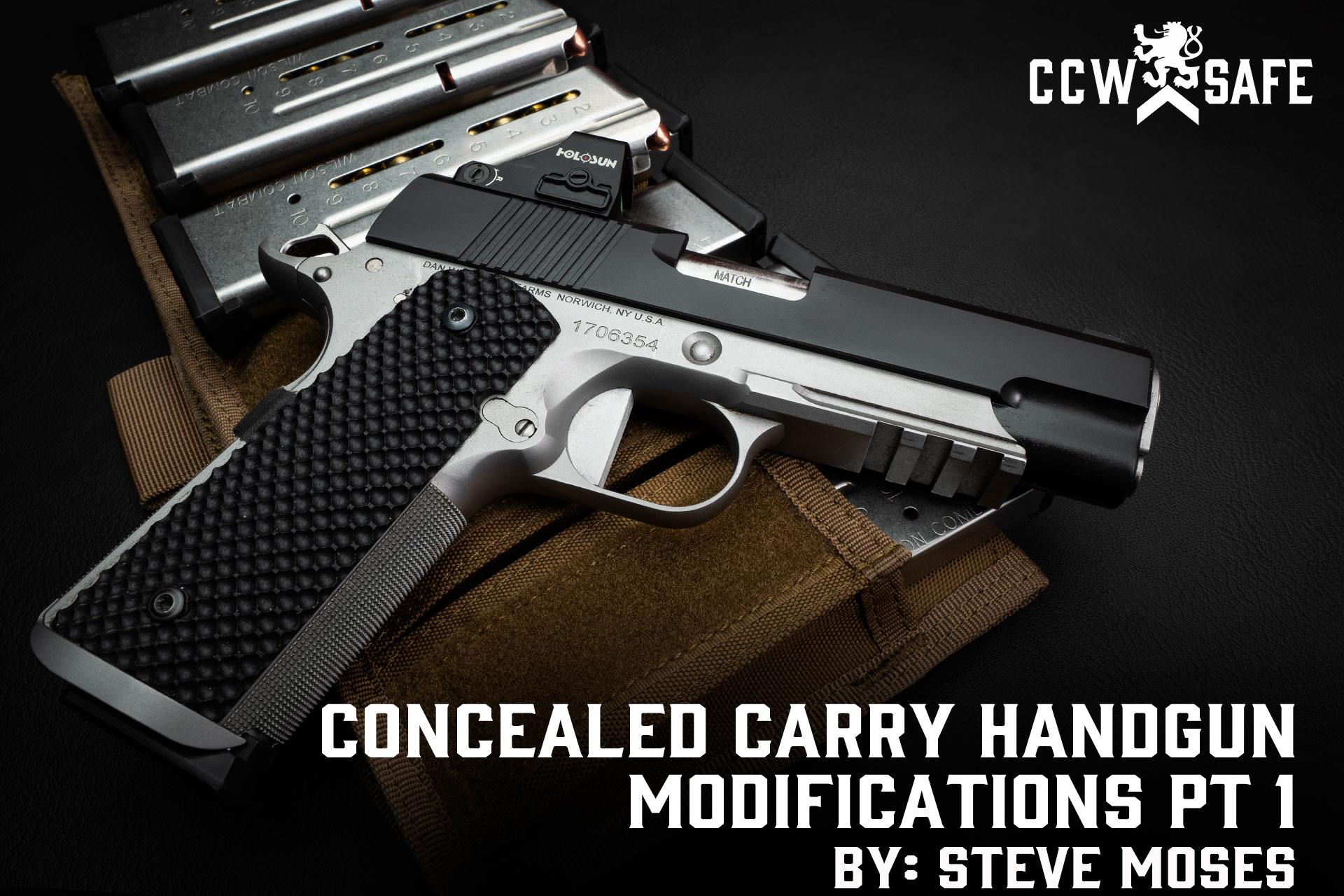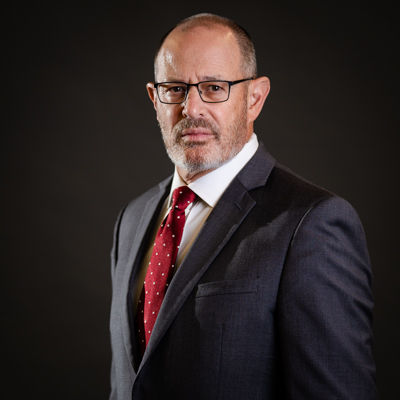
Posted on May 17, 2021
CONCEALED CARRY HANDGUN MODIFICATIONS PT 1
A recent email from a CCW Safe member contained the following excerpts:
“This is my second time reaching out to CCW Safe for thoughts and comments from the group. I thoroughly enjoy the podcasts and articles and find carrying on a daily basis humbling after listening to Steve, Don and Shawn regularly. They put carrying in perspective from all sides both legal and tactical and, for me at least, give pause to realize carrying is an immense responsibility and downright scary at times. I do shoot weekly with an EDC (“everyday carry”) rotation and always remember to never take carrying a deadly weapon for granted thanks to CCW Safe. I continuously go through circumstances in my head and how I might react. My question pertains to trigger manipulation and firearm enhancements. I have several M&P’s (on which) I have installed Apex Duty/Carry enhancement triggers in 9mm (and) .40, and a Shield .45. I’m wondering if installing enhancement devices gives a defender the appearance as “aggressive” in the event a bad situation occurred.”
This is an excellent question that is in my opinion too much for one writer to take on. I have enlisted the assistance of Shawn Vincent and Gary Eastridge. Shawn is a litigation consultant who helps select juries in self-defense cases, and he manages public interest of high-profile legal matters. He writes articles for CCW Safe regarding lessons learned from encounters involving concealed carriers and armed homeowners and hosts a podcast with CCW Safe National Counsel Don West. Gary Eastridge is the critical response coordinator and affiliate manager. He has over 35 years in law enforcement working on various levels. He has personally been involved in shootings, has investigated shootings as a homicide investigator, and for 10 years was the chief investigator for the District Attorney’s Office in Oklahoma County.
Shawn Vincent: In my experience, the prosecutor will try to find fault in any firearm used in a homicide. I’ve seen the same prosecutors argue in one case that a high trigger weight meant that the shooter had more time to reflect between each shot, and then in another case that a light trigger weight meant the shooter was cavalier and careless. In Zimmerman, the prosecutors argued the defender was reckless and looking for a fight because he carried his pistol with a round chambered. Those same prosecutors in the Michael Dunn case argued that Dunn’s decision not to have a round chambered showed that his decision to shoot was “premeditated.” I think some cases get more publicity when the weapon involved is particularly menacing.
The Gerald Strebendt case was controversial in part because of the type of rifle that the defender used. Likewise, I don’t think we would have ever heard of Zach Peters if he had used a pistol rather than an AR-15 to ward off intruders. The press will almost always stress the AUTOMATIC in semi-automatic. While a fair percentage of jurors will have some experience with firearms, few will be the type of gun owners who make serious modifications to firearms they own. If a prosecutor is inclined to pick apart the characteristics of a firearm no matter what and if the prosecutor finds fault in a modification made by the defender, they can try to transfer that fault to the defendant as something they did intentionally, as opposed to inheriting the manufacturer’s defaults. Anything done to make the firearm seem more menacing may count against the defender in the eyes of the jury. Anything perceived as making the firearm less safe may speak to the mindset of the defender as far as the jury is concerned.
That said, considerations involving the firearm and any modifications are at best a sideshow in any of the self-defense trials I’ve witnessed or participated in. The defender’s actions and mindset are far more important than the type of firearm used, or any modifications made to the firearm. If the modifications made are meant to make the firearm safer and more accurate, they probably won’t have a material negative impact on how the jury perceives the weapon in the case of a trial. In my experience most reasonable modifications will have little impact on a case. However, if there is an issue with a case (and there usually is) that modification could change the perspective of an investigator or prosecutor tasked with reviewing the case and making a charging decision. I wouldn’t want any modification on my carry gun that may make a prosecutor think I was careless, indifferent, or looking for a fight.
Part two of this article includes Gary Eastridge’s take on concealed handgun modifications from the perspective of law enforcement’s examination of handguns taken into custody, the danger of one’s actions being judged in part because of inappropriate engravings such as “Punisher skulls”, and what enhancements that he is willing to make on his personal handguns.
 |
Steve MosesSteve Moses has been a defensive firearms trainer for over 26 years and is a licensed Texas Personal Protection Officer with 7 years of experience performing as shift lead on a church security detail for a D/FW area metro-church. Steve is a co-owner and Director of Training for Palisade Training Group, LLC based in Dallas, Texas. Moses is a retired deputy constable and spent over 10 years on a multi-precinct Special Response Team. He owns multiple instructor certifications, including Rangemaster Advanced Handgun Instructor and Defensive Shotgun Instructor, Red Zone Knife Defense Instructor and Adaptive Striking Foundations Instructor, Modern Samurai Project Red Dot Sight Instructor, and State of Texas Personal Protection Officer Instructor. Steve holds a BJJ Brown Belt in Relson Gracie Jiu Jitsu. He is a content contributor for CCW Safe and writes weekly articles on various subjects of interest to concealed carriers. Moses shoots competitively and holds an IDPA Expert rating. Steve is an annual presenter at the Rangemaster Tactical Conference. |